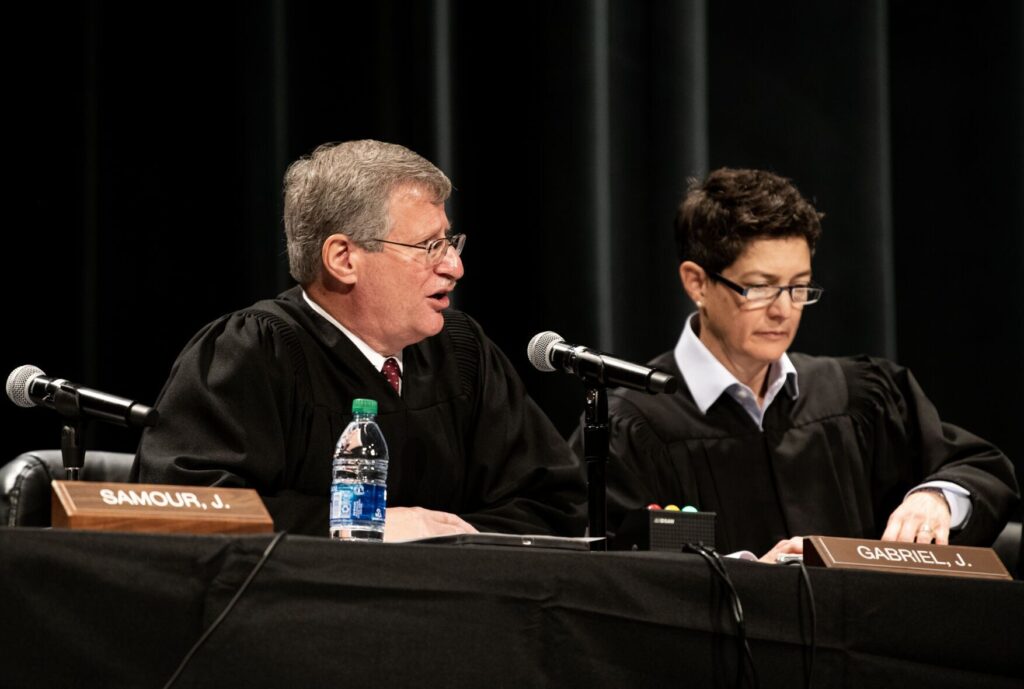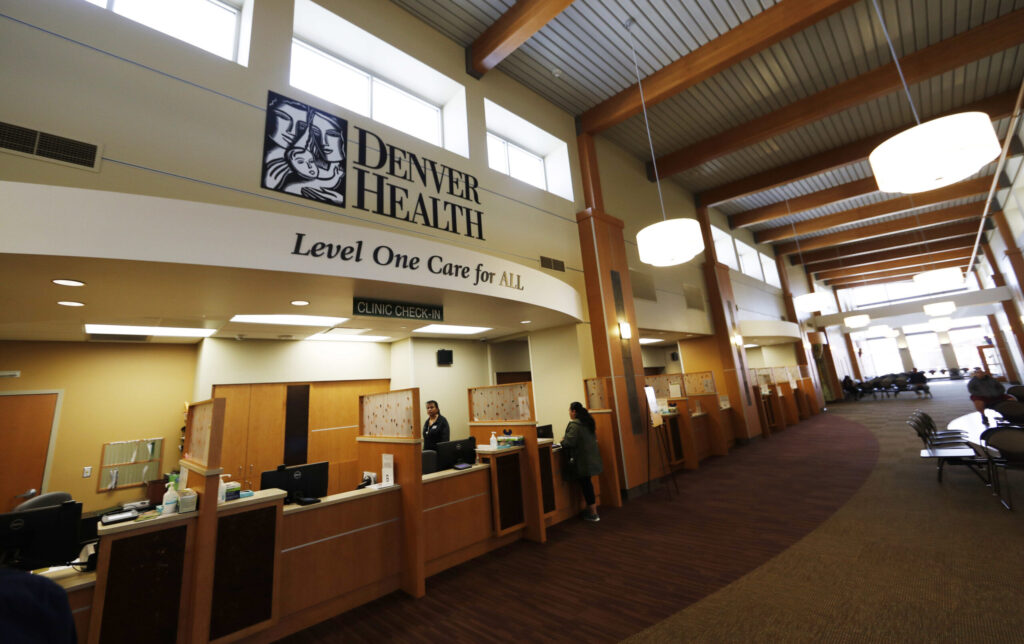Colorado’s lawmakers propose to spend $36.4 billion, which funds 3% raise for government workers

Colorado’s lawmakers are proposing to spend $36.4 billion – about $3.5 billion more compared to current allocations – to fund state operations in the next fiscal year.
Under the proposal, state employees will receive a 3% across the board raise, but no merit increases.
Counting general fund money alone, the plan calls for major increases in several areas, notably health care and public safety. Lawmakers seek to increase health care spending by $1.02 billion, a 33.4 percent hike from current levels. The spending proposal also allocates roughly $26 million more for public safety, a 15.4% increase.
Other notable increases include an additional $25 million for corrections, $45 million for the judicial department, and $65 million for the Colorado Department of Public Health and Environment.
All told, the spending plan for the state’s 2022-23 budget includes the following big-ticket items:
- Health care: $14.1 billion, including $4 billion in general fund and $8.2 billion in federal money, primarily the federal match for Medicaid
- Education: $7 billion, including $4.5 billion in general fund and $1 billion in federal money
- Higher education: $5.4 billion, including $1.3 billion in general fund, $3 billion in cash funds, primarily tuition revenue
- Human services: $2.6 billion, including $1.14 billion in general fund and $808 million in federal money
- Transportation: $1.8 billion total, including $954 million in cash funds and $829 million in federal money
- Corrections: $993 million, including $900 million in general fund
The Joint Budget Committee, which has spent the last four months crafting the budget, allocated “set-asides” in the budget proposal – known as the Long Appropriations Bill – for spending that hasn’t yet been determined. About $900 million is set aside in one-time only general fund dollars that lawmakers are figuring out how to spend.
The biggest ticket item in that $900 million could be $225 million, maybe more, to cover a missed payment in 2020 to the Public Employees’ Retirement Association. That payment comes out of 2018 legislation that requires the General Assembly to pay PERA $225 million per year in order to shore up the pension plan and cover some of its unfunded liability. Budget-cutting in 2020 meant the General Assembly skipped that payment, and PERA is now seeking the money, plus interest. But the interest payment, estimated at around $78.5 million, does not have any fans on the Joint Budget Committee, and some lawmakers suspect the Governor’s Office is no fan of restoring any of that missed payment, either.
In response to a question last month from Colorado Politics, the Governor’s Office said only that Polis “will review any bill that is sent to his desk and appreciate the work of our state employees who deserve to retire in dignity like any other Coloradan.”
Another $40 million is general fund is reserved for new programs with ongoing costs beyond the current budget.
Sen. Chris Hansen, D-Denver, who chairs the Senate Appropriations Committee, told Colorado Politics that lawmakers will use the same system for determining how those dollars will be spent as they used last year. Under that system, known as quadratic voting – lawmakers jokingly refer to it as “The Hunger Games” – there will be three different spending decisions: one-time money, the $40 million in ongoing spending, and any tax credit decisions policymakers want to make.
As contained in House Bill 1329, the budget is made up of several different types of funding sources. The first is the general fund, which is discretionary money that comes from corporate and individual income taxes and sales taxes. Lawmakers direct the general fund toward priorities, such as higher education, K-12 education, corrections, human services and Medicaid spending, which is handled by the Department of Health Care Policy and Financing. In the proposed 2022-23 budget, general fund dollars stand at $13.7 billion, or about $1.5 billion more than in the current budget.
The second largest pot of money – some $11.7 billion – comes from the federal government, the biggest chunk of which goes to the health care department and the Medicaid match, about $8.2 billion total.
The last pot comes from cash funds – from fees and licenses, for example. Estimated at $10 billion, the largest chunk of that is $3 billion for higher education. The revenue comes mostly from tuition fees.
Not included in the “Long Bill” is about $2.6 billion in federal American Rescue Plan Act money. Lawmakers are working on more than a dozen bills that came out of recommendations from task forces dealing with economic recovery, behavioral health and affordable housing, which will decide how that money will be spent.
The Long Bill estimates total spending at around $38.3 billion, but $2.3 billion of that is in what’s known as “re-appropriated funds,” which are dollars that are shifted between state agencies and, as a result, are double-counted. The money is for spending, such as legal representation to state agencies from the Attorney General’s office, or services provided to state agencies by the Department of Personnel and Administration. Information technology services also fall under that “re-appropriated funds” category.
The budget, however, also shows the General Assembly’s reliance on marijuana tax cash funds to fund a variety of programs isn’t what it used to be.
That change is reflected in what’s known as an “orbital bill:” 14 measures that lawmakers will work on, alongside the Long Bill, and are intended to help balance the budget.
Contained within House Bill 1341 is a requirement to reduce the amount of money transferred from the marijuana tax cash fund by half, from $100 million to $50 million. According to the Long Bill narrative, the March 2022 revenue forecast showed that the fund would come up short, by about $48.4 million, to support an ongoing transfer, existing appropriations and a required reserve. Marijuana tax revenues are down by about 8% in the current fiscal year. Those declines are due to slowing demand and declining wholesale prices, according to the March forecast.
State employees are slated to receive a 3% across-the-board raise in the 2022-23 budget, but no merit increases, according to the narrative.
The budget also includes the statutory reserve, called “rainy day” fund, which would be used in case of emergencies, such as to cover for spending when revenue dramatically dips as a result of a pandemic or recession. The reserve is required to represent 15% of general fund appropriations, or about $2 billion in the upcoming year’s budget. That’s a change from previous years, when that 15% was supposed to be based on revenues.
The Pew Trusts, which look at state reserves, estimated in 2021 that Colorado could operate the government for 60.7 days on those reserves, well above the median national average of 29.4 days. Healthy reserves are also good for state credit ratings, the Pew report said.
This week’s action in the House includes Tuesday’s House Appropriations Committee, which will review the budget and the orbitals, to be followed by public caucuses, when members of the Joint Budget Committee present the budget to their respective caucuses. On Wednesday, amendments to the Long Bill are expected, along with a second reading debate. A final vote on the budget and most, if not all of the orbitals, is expected on Thursday.
Editor’s note: total budget number corrected to $36.4 billion.













